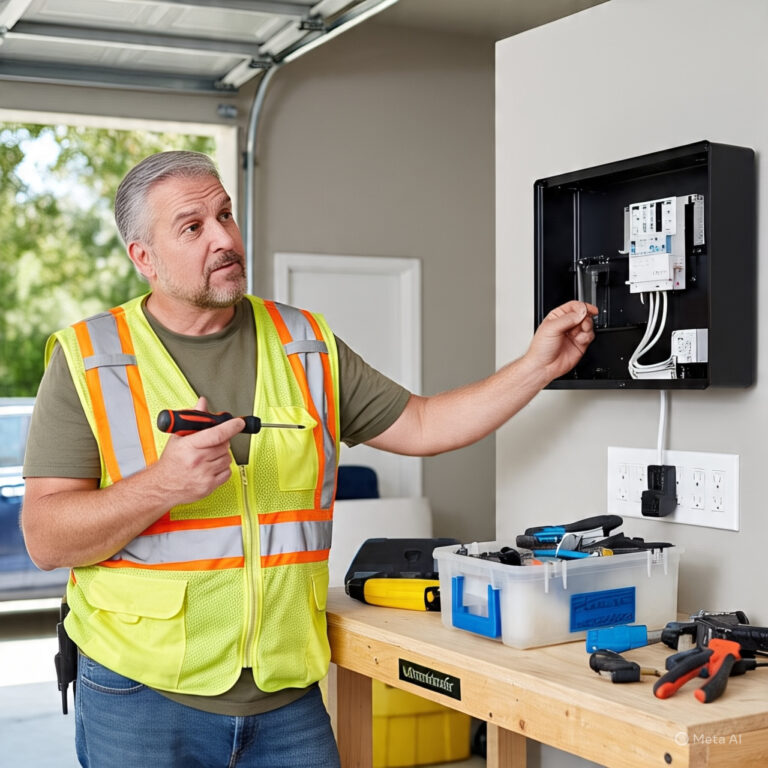Electricity powers nearly every aspect of daily life in the modern home, from lighting and appliances to heating and entertainment. As a homeowner, having a basic understanding of common electrical repairs is practical and essential for maintaining safety and functionality. While licensed professionals should always address major electrical issues, there are many everyday repairs and checks that homeowners can learn to handle with confidence. Understanding these repairs can help you save money, improve energy efficiency, and respond quickly to minor electrical problems.
We will explore the most common electrical repairs that homeowners frequently encounter, providing insights into what to look for, how to approach the problem safely, and when to call for professional support. This knowledge helps ensure your home’s electrical system remains reliable and reduces the risk of future complications or hazards.
Essential Electrical Repairs You Can Handle With Confidence
-
Resetting Tripped Circuit Breakers
A tripped circuit breaker is one of the most frequent electrical issues homeowners face. When a circuit is overloaded or a short occurs, the breaker trips to cut off power and prevent overheating or electrical fires. While this may seem alarming, the solution is usually straightforward. Begin by identifying which circuit has tripped, typically in the “off” position or stuck in the middle. Switch it all the way off, then back on to reset it. After resetting, observe if the breaker trips again. You may have an overloaded circuit or a faulty appliance connected if it does. If the problem persists, it’s wise to consult a professional for expert electric repair in Vancouver, WA, to ensure safety and proper diagnosis.
To avoid constant tripping, try unplugging and redistributing a few devices to different outlets. Learning to manage your circuit breaker panel keeps power flowing and protects your electrical system from further strain. Always remember to turn off major appliances before resetting to prevent sudden surges. This simple skill can restore function quickly and safely in most cases.
-
Replacing Faulty Outlets
Outlets wear out over time, especially in older homes, and a malfunctioning outlet can create frustration or even pose a fire hazard. Common signs of a faulty outlet include inconsistent power, burn marks, cracking, or a loose fit when you plug in cords. Replacing a standard outlet is a manageable task if approached carefully. First, cut power to the outlet from the circuit breaker. Use a voltage tester to ensure no current runs through the wires. Then, unscrew the faceplate and remove the outlet from the wall box.
Take note of how the wires are connected before disconnecting them. When installing the new outlet, ensure that each wire is securely fastened to the correct terminal—black or red wires to brass screws, white wires to silver screws, and green or bare wires to the ground screw. Secure the outlet, attach the cover plate, and restore power to test it. This repair keeps your home safe and functioning efficiently.
-
Fixing Loose Light Switches
A loose or wobbly light switch may not seem urgent, but it can lead to wiring problems or even shocks if left unattended. Light switches loosen over time due to frequent use, and screws may lose their grip in the wall plate or the electrical box. To fix this, cut power at the breaker to the switch you’re repairing. Remove the switch cover and check the mounting screws. If the box is loose in the wall, you may need to add support using shims or box extenders.
After ensuring the box is secure, tighten the switch and replace the cover. While the job is simple, it improves your electrical setup’s appearance and safety. Light switches are used daily, and small issues can lead to bigger problems if ignored. Addressing them promptly helps maintain the integrity of your home’s electrical components and ensures smooth operation.
-
Replacing Light Fixtures and Bulbs
Changing a burnt-out bulb is easy enough, but replacing an entire light fixture is another repair many homeowners can handle with care. Whether updating your decor or fixing a fixture that flickers, this repair enhances function and style. Begin by turning off the breaker that controls the fixture. Remove the existing fixture by unscrewing the mounting hardware and gently disconnecting the wiring. Identify and match the wires from the fixture to the wires in the ceiling box—black to black (hot), white to white (neutral), and green or bare copper to ground. Use wire nuts to secure connections and electrical tape for added protection. Mount the new fixture, ensure it’s stable, and install the bulbs before turning the power back on. This upgrade can dramatically improve lighting in any room and provide a great opportunity to replace old bulbs with energy-efficient LED options. It’s a satisfying project that delivers immediate results.
Understanding the basics of home electrical repairs empowers homeowners to respond to common issues with confidence and caution. While major repairs and upgrades should always be left to licensed professionals, many minor tasks can be safely handled with the right preparation and tools. These repairs ensure the efficient operation of your electrical system and help you avoid unnecessary service calls. When done responsibly, electrical maintenance protects your home and your budget. By staying informed and addressing problems early, you contribute to the longevity of your home’s infrastructure. Knowing when to act and when to seek assistance is the foundation of responsible homeownership. Investing time in these everyday repairs pays off through comfort, security, and lasting functionality.

